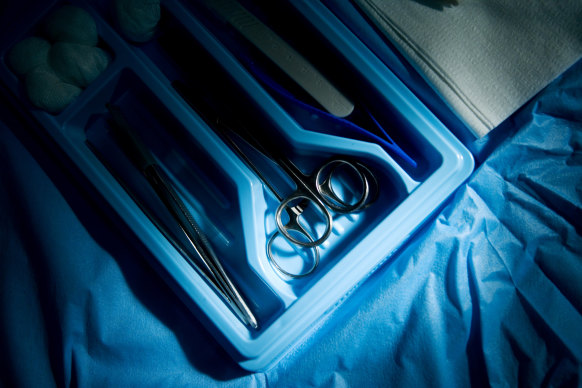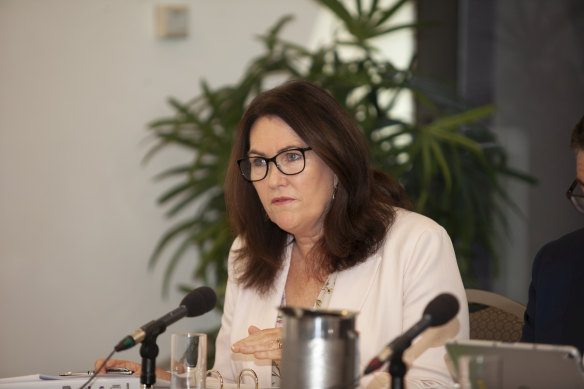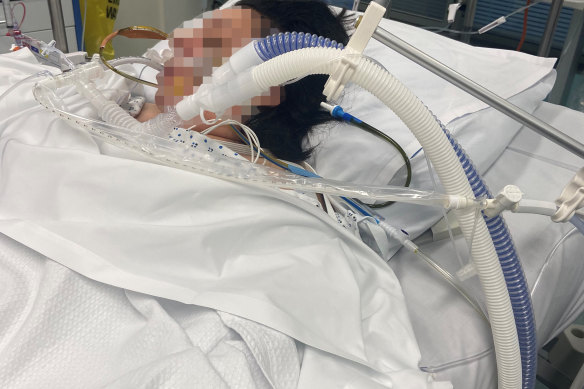- Business
- Consumer affairs
- Cosmetic Cowboys
This was published 3 years ago
Opinion
‘Makes my skin crawl’: Dancing ‘Jolene’ doctor not a specialist anaesthetist
Adele Ferguson
Investigative journalist and columnistThe anaesthetist caught dancing and laughing on an internal video as two cosmetic surgeons jigged and sang as they thrust long stainless-steel cannulas into an unconscious male patient, holds a basic medical degree.
It seems the title anaesthetist carries similar confusions as the title cosmetic surgeon, which allows doctors who are not trained specialist surgeons to perform complex surgeries including facelifts.

The states and Commonwealth have released a 108-page Regulation Impact Statement (RIS) into the use of the title surgeon and cosmetic surgeon.Credit: Nic Walker
In a similar vein, a doctor with a basic medical degree can call themselves an anaesthetist and administer anaesthesia to patients.
The problem is the law. Under the current system, the title cosmetic surgeon isn’t protected and neither is the title anaesthetist.
It creates a lot of confusion for patients who don’t know the difference. To put it into perspective, a “specialist anaesthetist” has a general medical degree and a minimum five years of supervised Australian and New Zealand College of Anaesthetists training (or equivalent), following two years in-hospital training.
The chair of the Medical Board Dr Anne Tonkin told a recent parliamentary inquiry into the national regulator the Australian Health Practitioner Regulation Agency (AHPRA) how the system works.
“I think the fundamental point here is that, given the way that the national law has been constructed, we do not regulate scope of practice at all. We regulate title,” she said.
She then proceeded to explain what she meant by saying she had worked in a hospital as a specialist physician for a number of years but could have administered chemotherapy if she had wanted.
“I’m not an oncologist. I don’t have specific training in that area, and I would not do that because I don’t feel that I have the expertise or the experience to do that, and that wasn’t my job. But the board would not regulate me and would not stop me from doing that, and it’s the way the whole system has been set up,” she said.
AHPRA relies on medical practitioners to practice in scope of practice for which they are adequately trained and experienced. That is fundamental to the way in which the national law has been set up. It’s the trust game. “We don’t operate on restricting people’s scope. We leave that to the individual practitioner along with their credentialing authority, their employer or the practice in which they work et cetera, to make sure that people are practising in the areas where they do have the appropriate expertise,” she said.
On Monday, the federal and state governments launched a landmark review aimed at overhauling laws into who can call themselves a cosmetic surgeon after a joint investigation by The Sydney Morning Herald, The Age and Four Corners uncovered a litany of disturbing practices at a network of clinics run by celebrity cosmetic surgeon Daniel Lanzer, including allegations of serious hygiene and safety breaches and botched surgeries that left some patients in extreme pain.
You wait for the dead person to be presented for consideration after the fact … but there is no field into which a doctor might not stray.
Senator Deborah O’Neill
Two weeks earlier, AHPRA announced a sweeping review of the multibillion-dollar cosmetic surgery industry, acknowledging that a profit-driven culture had led to dangerous practices.
But cosmetic surgery is the tip of the iceberg.
Senator Deborah O’Neill responded to Dr Tonkin’s explanation of scope of practice with a chilling observation. “I’m very concerned that you’re telling me that if there’s a greedy doctor who finds a business model that is lucrative, the current law and structures of the law in Australia allow them to do that with a high degree of impunity and certainly a lack of supervision unless something goes wrong.”

Labor Senator Deborah O’Neill.Credit: Eamon Gallagher
She pointed out the reactionary rather than proactive nature of AHPRA as a regulator of the health system. “You wait for the dead person to be presented for consideration after the fact … but there is no field into which a doctor might not stray if they were so inclined.”
The video, taken just over 12 months ago, was shown to specialist plastic surgeon Mark Ashton, a professor of surgery at the University of Melbourne, who described the dancing surgeons as dangerous and disrespectful.
Dr Lanzer, who recently surrendered his registration and will no longer practice medicine in Australia, reprimanded the staff, said the anaesthetist was not his employee, and the video was not posted on social media.
The professional organisation for specialist anaesthetists, the Australian and New Zealand College of Anaesthetists (ANZCA), slammed the dancing anaesthetist, Dr Terrence Palmer. The president of ANZCA Dr Vanessa Beavis, said ANZCA was “dismayed and appalled that any practitioner who is caring for an unconscious patient behaves in the disrespectful and unprofessional manner shown in the recent joint investigation “Cosmetic Cowboys” by The Age, Sydney Morning Herald and Four Corners.”
Dr Palmer isn’t a member of ANZCA, which is responsible for training, assessing, and setting standards for all specialist anaesthetists and specialist pain medicine physicians wishing to practice in Australia and New Zealand.
“Recent media reports on the cosmetic surgery industry highlighting the practices of an “anaesthetist” in a Sydney day surgery hospital are extremely concerning and do not reflect the safe clinical standards practised by the specialist anaesthetists who are fellows of ANZCA (FANZCA),” Dr Beavis said in a statement.
The Jolene video was recorded at Surry Hills Day Hospital. A search of Google lists Dr Palmer as an anaesthetist on the hospital’s website. A search of the AHPRA registration lists his qualifications as a Bachelor of medicine and surgery from the United Kingdom.
Responding to questions, Dr Palmer said he completed higher professional training in anaesthetics from 1982 to 1986 in the UK, “but emigrated to Australia without final fellowship.” He said he holds a general registration. “I have provided non-specialist anaesthetic services in both public and private institutions since 1986,” he said.
“I do not hold myself out as a specialist anaesthetist, nor do I market my services. I am not mentioned in the current Surry Hills Day Hospital website. I was unaware that I was mentioned on an old Surry Hills Day Hospital Website that is at least six years out of date.”
Dr Palmer was the anaesthetist who administered the general anaesthetic to the 42-year-old woman who was rushed to St Vincent’s Hospital in November in a critical condition after her partner found her unconscious in a hotel room from significant blood loss hours after tummy tuck and liposuction treatment at Sydney’s Surry Hills Day Hospital.

Marie in ICU at St Vincent’s Hospital hours after a cosmetic surgery procedure.
There is no suggestion Dr Palmer was responsible for her condition but when asked about the general anaesthetic she said she had no idea there was a distinction between an anaesthetist and a specialist anaesthetist.
The mother-of-three said her invoice for the general anesthetic included a payment for anaesthetic services of $2400 and stated Dr Palmer was an anaesthetist.
“I can’t believe someone can put you to sleep and just have a medical degree,” she said. “This makes my skin crawl.”